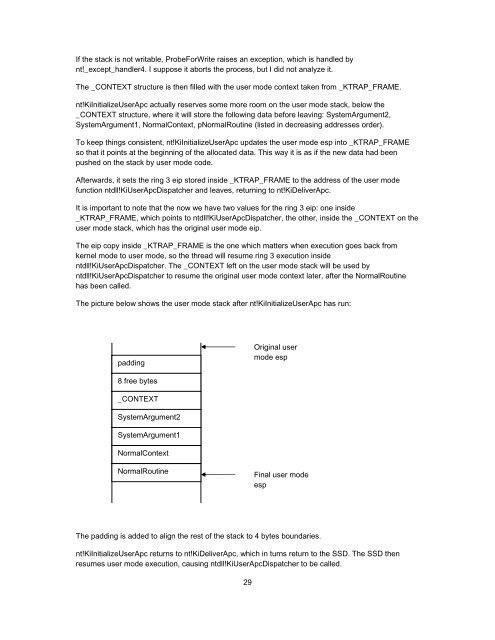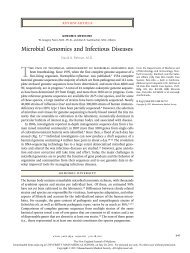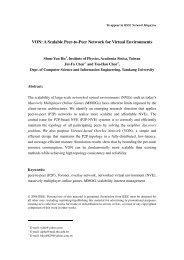366.7 KB - Evernote
366.7 KB - Evernote
366.7 KB - Evernote
Create successful ePaper yourself
Turn your PDF publications into a flip-book with our unique Google optimized e-Paper software.
If the stack is not writable, ProbeForWrite raises an exception, which is handled by<br />
nt!_except_handler4. I suppose it aborts the process, but I did not analyze it.<br />
The _CONTEXT structure is then filled with the user mode context taken from _KTRAP_FRAME.<br />
nt!KiInitializeUserApc actually reserves some more room on the user mode stack, below the<br />
_CONTEXT structure, where it will store the following data before leaving: SystemArgument2,<br />
SystemArgument1, NormalContext, pNormalRoutine (listed in decreasing addresses order).<br />
To keep things consistent, nt!KiInitializeUserApc updates the user mode esp into _KTRAP_FRAME<br />
so that it points at the beginning of the allocated data. This way it is as if the new data had been<br />
pushed on the stack by user mode code.<br />
Afterwards, it sets the ring 3 eip stored inside _KTRAP_FRAME to the address of the user mode<br />
function ntdll!KiUserApcDispatcher and leaves, returning to nt!KiDeliverApc.<br />
It is important to note that the now we have two values for the ring 3 eip: one inside<br />
_KTRAP_FRAME, which points to ntdll!KiUserApcDispatcher, the other, inside the _CONTEXT on the<br />
user mode stack, which has the original user mode eip.<br />
The eip copy inside _KTRAP_FRAME is the one which matters when execution goes back from<br />
kernel mode to user mode, so the thread will resume ring 3 execution inside<br />
ntdll!KiUserApcDispatcher. The _CONTEXT left on the user mode stack will be used by<br />
ntdll!KiUserApcDispatcher to resume the original user mode context later, after the NormalRoutine<br />
has been called.<br />
The picture below shows the user mode stack after nt!KiInitializeUserApc has run:<br />
padding<br />
8 free bytes<br />
_CONTEXT<br />
SystemArgument2<br />
SystemArgument1<br />
NormalContext<br />
NormalRoutine<br />
The padding is added to align the rest of the stack to 4 bytes boundaries.<br />
nt!KiInitializeUserApc returns to nt!KiDeliverApc, which in turns return to the SSD. The SSD then<br />
resumes user mode execution, causing ntdll!KiUserApcDispatcher to be called.<br />
29<br />
Original user<br />
mode esp<br />
Final user mode<br />
esp
















